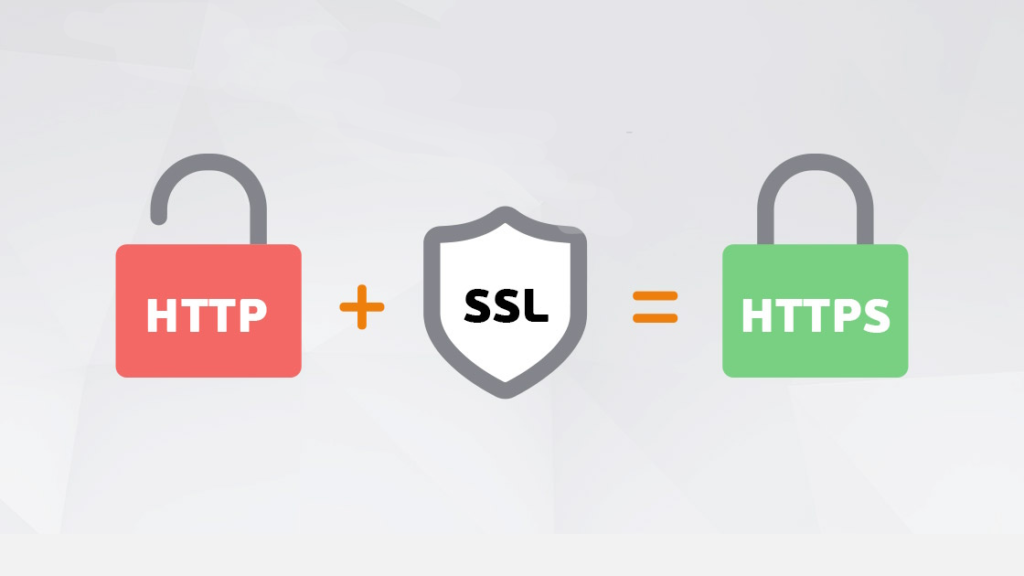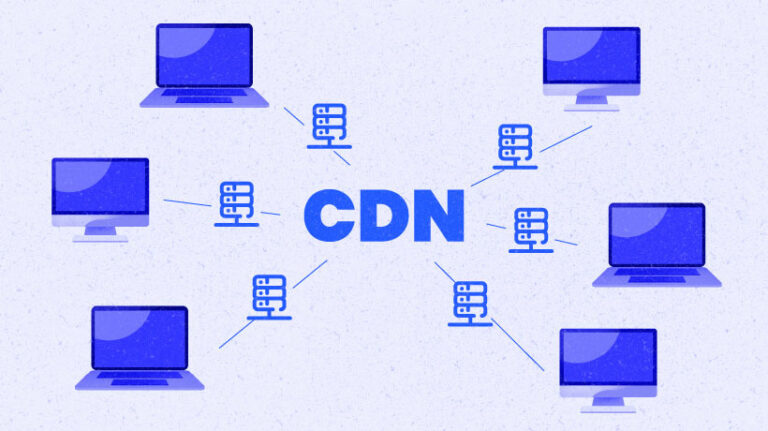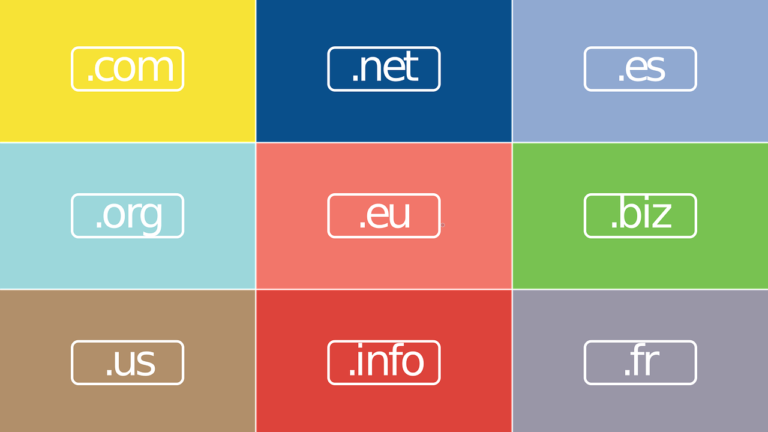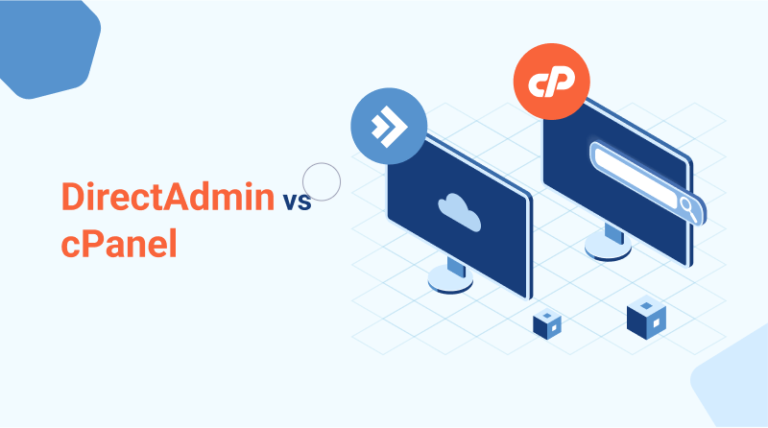The impact of SSL certificates on your website security and SEO
- The role of SSL in search engine optimization
- The impact of SSL on improving SEO performance
- Why secure your site with SSL
- The essence and purpose of SSL in securing websites
- The importance of SEO ranking and its role for a website
- A breakdown of ranking factors in SEO
- How SSL has an impact on improving SEO rankings
- HTTP and HTTPS: a comparison and their impact
- HTTPS and its impact on Google ranking
- Comparison of TLS and SSL and their use in HTTPS
Creating an online business is quite a daunting task, especially if you create it from scratch. The challenges don’t end at creating a website, because you also need to make sure it’s secure. SSL (Secure Socket Layer), a data encryption technology that secures data transmission between the user’s browser and the website server, can help solve this difficult task. In doing so, it not only increases the security of your website, it also plays an essential role in SEO (Search Engine Optimization), which leads to better visibility of your website in search engines.
The role of SSL in search engine optimization
SSL plays an important role in SEO optimization as it ensures the security of the website. This, in turn, is one of the key ranking factors in search engines. Google and other major search engines prefer sites with SSL because they are trying to keep users safe when they visit websites.
An SSL certificate confirms that your website is really who it claims to be and that any information sent to your website will be encrypted. This builds trust among users, and as a result, leads to more traffic.
Google started using HTTPS (HTTP Secure), a version of HTTP with SSL, as a ranking factor in 2014. This means that sites with SSL may get a slight ranking advantage over sites without SSL.
The impact of SSL on improving SEO performance
SSL has a significant impact on a website’s SEO ranking. First, it increases visitors’ trust in the web resource by providing data encryption and confirming its authenticity. This in leads to increased traffic and lower bounce rate. Users can see by whom and when the certificate was issued – to do this, click on the padlock in front of the domain name in the address bar.
Second, SSL is an important ranking factor that search engines take into account. Google, for example, pays attention to the presence of SSLcertificates and considers it a positive signal, as the search engine shows only secure sites in the results.
However, there can be challenges when moving to HTTPS, such as the need for redirects and potential performance issues. Therefore, it is important to plan everything carefully and implement according to the plan.
Why secure your site with SSL
Securing your website with SSL has several advantages:
- SSL certificate provides encryption of data transmitted between your website’s server and the user’s browser. This means that any information that users enter on your site (such as passwords or payment information) will be protected from interception by strong encryption.
- SSL also confirms the authenticity of your website, which can increase user trust. When users see a lock in the browser address bar or a green address bar, they know that going to the site will be safe and entering their data will not result in it being stolen.
- Google prefers sites with SSL, so having a certificate can help improve your site’s ranking in search results.
- If you accept credit cards on your website, you need to comply with Payment Card Industry Data Security Standards (PCI DSS). One of the requirements is to use SSL.
Overall, SSL is an important tool for securing a website, protecting user data, and building user trust.
The essence and purpose of SSL in securing websites
The main purpose of SSL is to protect the data that is transferred between the web server and the user’s browser. This is accomplished by using an encryption protocol that creates a secure tunnel for data transmission. As a result, any information transmitted between the server and the browser remains private and unavailable for interception.
SSL certificates also validate the authenticity of a website, which increases trust from users. If a site uses SSL, its address begins with HTTPS instead of HTTP, and a padlock icon appears in the browser address bar to indicate a secure connection. Connection to such a site is via the secure HTTPS protocol.
The importance of SEO ranking and its role for a website
Let’s start with definitions. SEO (Search Engine Optimization) ranking is a measure of a website’s quality for search engines. SEO optimization is done to improve the ranking and visibility of a website in the search results of Google, Bing, etc. This means that sites with a high SEO rating are more likely to appear on the first pages of search results, which leads to more traffic to the site.

SEO ranking is important for any website for several reasons:
- Visibility and traffic. Websites with high SEO rankings usually get more traffic because it’s easier for users to find them online. Only a small fraction of users search beyond the first page of results on Google.
- User Confidence. Sites that appear at the top of search results are often perceived as more trustworthy and authoritative.
- Conversion and sales. More traffic can lead to more conversions and sales, especially if your site offers products or services.
- Competitive Advantage. SEO will help you stand out among your competitors, because when strategizing, they will focus on the sites at the top of the search results.
To summarize, SEO ranking plays a key role in the success of any online business. It is a tool that helps you attract traffic, gain trust, increase sales and provide a competitive advantage.
A breakdown of ranking factors in SEO
Ranking factors in SEO can be varied and changeable as search engine algorithms are constantly being updated. However, some key factors remain constant. Those are the ones we’re going to look at.
Keywords
Keywords play an important role in SEO because they help search engines understand what your website and specific pages are about. Key queries can be either words or phrases that users type into search engines to find information. Let’s take a look at some important aspects related to keywords:
- Keyword selection. The process of choosing the right keywords requires research and analysis. You must consider what words and phrases your target audience might use when searching for the products, services or information you offer. Specialized tools like Google Keyword Planner, Serpstat or SEMRush can be useful for this.
- Scope. Key phrases can be short (1-2 words) or long (3 or more words). Short keywords tend to have high search volume but also more competition, while long-tail keywords tend to have lower search volume but less competition and higher specificity. Low-frequency queries will be effective for the development of a project from scratch.
- Keyword Placement. Keywords should be included in various parts of your website, including headings, subheadings, main content, URLs, meta tags, and alt text (alt attribute) images. However, it is important not to overload the page with keywords, as this can lead to “penalties” from search engines.
- User Intent. Understanding user intent is another important aspect of keyword selection. This involves understanding exactly what the user wants to find when entering a particular keyword. For example, the query “buy hosting” is quite clear – the user wants to buy hosting. Such requests are referred to as commercial inquiries. Now, the “hosting” request is more general. Perhaps the user doesn’t want to buy hosting, but is looking for a comparison of providers or plans.
Keywords are a major part of SEO, and using them correctly can greatly improve your website’s search engine ranking position.

Content quality
Quality content is one of the key SEO factors you need to attract and retain an audience on your website. Here are a few components of quality content:
- Value and uniqueness. Content should be useful to your target audience. It should offer new, unique information, well, or at least articulate known information in a new way.
- Relevance. Content should be relevant to the topic of the keyword query and answer the questions of the target audience.
- Readability and structure. Content should be easy to read and understand. This requires the use of headings, subheadings, lists and short paragraphs. This kind of text is easier to comprehend.
- Keyword Usage. Keywords help search engines understand what your content is about. They should be naturally integrated into your texts (there should be no phrases like “buy garage Kiev cheap” and other things). Search engines learned long ago to recognize keyword queries in natural phrases.
- Content relevance. Search engines prefer fresh and relevant content. Updating and adding new content regularly will help improve your SEO ranking.
- Visual elements. Images, videos, infographics and other visual elements make content more attractive and interesting for users.
- Scope. While content length can vary depending on the topic and audience, longer articles often rank higher in search engines because they better expose the topic to visitors.
In addition to these factors, it’s important to make sure your content is error-free, well-written, and presents your brand in the best light.
Optimization for mobile devices
Today, most users browse websites from mobile devices. That’s why your resource should display correctly on smartphones and tablets. And adaptive layout is also a ranking factor in Google. Let’s break down a few key aspects of optimizing for mobile devices:
- Adaptive Design. Your website should automatically adapt to the screen size of the device it is displayed on. This means that website elements such as text, images and buttons should be clearly visible and easily accessible on all devices.
- Download speed. Mobile users often have slow internet connections, so the site should load quickly. You can speed up downloads by reducing the size of files and images, removing unnecessary scripts from the page.
- Ease of Navigation. Navigation on your website should be simple and intuitive. It is important that users can easily find what they are looking for on a mobile device.
- Readability of text. The text on your website should be large and clear enough to be easily read on a small screen.
- Compatibility with a variety of devices. Your website should display properly on all types of mobile devices, including smartphones and tablets of various brands and operating systems.
As you can see, mobile optimization is an important aspect of SEO that can have a significant impact on traffic and user satisfaction.
Page load speed
Page load speed is the time it takes for the content on a web page to fully load. This is an important aspect of SEO, as slow-loading web pages can put users off and negatively affect a site’s search engine position. Google breaks down speed into several components:
- Time to download visible content (FCP). This is the time it takes to load the first visible element on a web page.
- Visible shifts (CLS). This is a measure of how often elements on a page are shifted during loading. A large CLS can be annoying for users as it can lead to accidental clicks.
- Server response time. The time at which the server begins to respond to the browser’s request. The optimal server response time is up to 0.5 seconds.
- First content rendering. This is the process of displaying the first pieces of content on a page. Optimal rendering time of the first content is up to 1 second.
There are various tools to check your site’s loading speed, including Google PageSpeed Insights, GTmetrix, and Pingdom. These tools analyze various aspects of website performance and offer recommendations on how to improve loading speeds.
Internal and external optimization
Optimizing a website for search engines involves two main components: internal and external optimization.
Internal optimization (or on-page SEO) involves everything you do on your website to improve its visibility in search engines. This may include:
- Creating quality, unique content that is useful to your audience;
- use of keywords;
- improving the site structure and navigation;
- increasing page load speed;
- image optimization;
- setting up redirects;
- error correction;
- internal linking.
External optimization (or off-page SEO) includes anything you do outside of your website to improve its position in search engines. It fits that definition:
- linkbuilding (placing links to your site on other resources);
- social media advertising;
- Creating and distributing press releases and other content that can drive traffic to your website.
Both of these components are important to a successful SEO strategy, and they must work together to bring the best results.
Site security
When a site uses an SSL certificate, all data transmitted between that site’s server and the user’s browser is encrypted. This means that even if an attacker is able to intercept this data, they will not be able to read and use it without the decryption key.
However, it’s worth noting that simply having an SSL certificate does not guarantee high rankings. Other factors such as content quality, keyword optimization, page load speed and more play an equally important role.
How SSL has an impact on improving SEO rankings
Search engines value user security. So if your website uses SSL, it means that all data transmitted between your website and the user is encrypted and not accessible to attackers. This creates trust and security that search engines favorably evaluate.
The second thing to note is that Google has openly stated that SSL is a ranking factor. While this doesn’t mean that simply having an SSL certificate will automatically get you to the top of the list, it is one of the factors Google considers when ranking sites.
However, we cannot ignore the fact that users themselves are becoming more and more aware of online security. Many of them look for that very lock icon before trusting a website. If your website has SSL, it can attract more visitors, which in turn can increase your SEO ranking.

HTTP and HTTPS: a comparison and their impact
HTTP and HTTPS are the two main protocols used to transfer data between a web server and a browser. They play a central role in sharing information online, but there are key differences between them that affect security and SEO.
HTTP, aka HyperText Transfer Protocol, is the standard method for transferring data on the Internet. It works in passive mode – meaning that data is transmitted “as is”, without encryption. If an attacker intercepts the data, they can easily read and use it. Google ranks sites that use HTTP lower because they don’t provide enough security for users.
HTTPS, aka HyperText Transfer Protocol Secure, uses SSL (Secure Socket Layer) or TLS (Transport Layer Security) to encrypt data transmitted between the web server and the browser. This means that even if an attacker intercepts the data, they will not be able to read it without the decryption key. Google ranks sites that use HTTPS higher because they provide better protection for users.
These protocols can be compared on several key parameters:
- Safety. As mentioned earlier, the main difference between HTTP and HTTPS is security. HTTP transmits information in plaintext, which makes the data vulnerable to interception and use by attackers. HTTPS, in turn, encrypts data, making it unintelligible and useless to hackers without the proper decryption key.
- Performance. Another difference between HTTP and HTTPS is their impact on site performance. In the past, HTTPS was slower because it required extra power to encrypt the data. However, modern technology has greatly improved the performance of HTTPS, and now the difference in speed is almost imperceptible.
- SEO. From an SEO perspective, HTTPS has an advantage over HTTP. Google and other search engines favor sites that use HTTPS and may give them higher rankings in search results.
- User Confidence. HTTPS also helps to increase user trust. Browsers display a lock icon next to a site’s URL to indicate that it is secure.
To summarize, choosing between HTTP and HTTPS in favor of the latter has a significant impact on your site’s security and SEO ranking. Using HTTPS will help protect your users’ data and improve your SEO ranking, making your site more attractive to search engines.
HTTPS and its impact on Google ranking
Let’s take a look at how HTTPS affects ranking in Google:
- Ranking factor. In 2014, Google announced that HTTPS would become an “easy” ranking factor. This means that sites using HTTPS may gain a slight advantage over sites using HTTP. However, it’s worth noting that content quality and other ranking factors still play a more important role.
- Security and user trust. HTTPS can increase user confidence as they see that the site is protected. Increasing dwell time on the site also has a positive effect on ranking.
- HTTPS Preference. Google Chrome and other popular browsers warn users when they visit unsecured HTTP sites. This can scare them away and increase the bounce rate, which negatively affects ranking.
- Improved performance. HTTPS supports new protocols such as HTTP/2, which can significantly speed up page loads. Page load speed is another important ranking factor for Google.
So, while switching to HTTPS does not guarantee a boost in search results, it can help improve SEO by improving security, user trust, and site performance (all three of these factors, either individually or in combination, have a positive impact on a site’s search engine position).
Comparison of TLS and SSL and their use in HTTPS
SSL (Secure Sockets Layer) and TLS (Transport Layer Security) are cryptographic protocols used to ensure the security and confidentiality of data on a network. While SSL was the first of these two protocols, most modern websites now use TLS. Their differences are as follows:
- SSL was developed by Netscape and has two major versions: SSL 2.0 and SSL 3.0. After a number of vulnerabilities were discovered in SSL 3.0, it was replaced by TLS 1.0. Since then, several versions of TLS have been released, including TLS 1.1, TLS 1.2, and TLS 1.3.
- In general, TLS is considered to be more secure than SSL. This is because it uses more sophisticated encryption algorithms and offers more options for encrypting data.
- All modern browsers support TLS, but SSL support may be limited. This makes TLS the preferred choice for most websites.
In the beginning, HTTPS used SSL, but due to vulnerabilities in SSL 3.0, most websites switched to using TLS. Now, when we talk about “SSL certificate” or “SSL encryption” in the context of HTTPS, we usually mean TLS, even if we still use the term “SSL”.
In general, TLS is a modern and more secure alternative to SSL, and it is the standard for encrypting data in HTTPS.
In conclusion, SSL certificates are an integral part of the modern internet, providing security and aiding SEO promotion. It is important to note that an SSL certificate protects data only during transmission and does not provide protection against all possible threats. Nevertheless, its use has already become the standard for any site seeking security and reliability.








